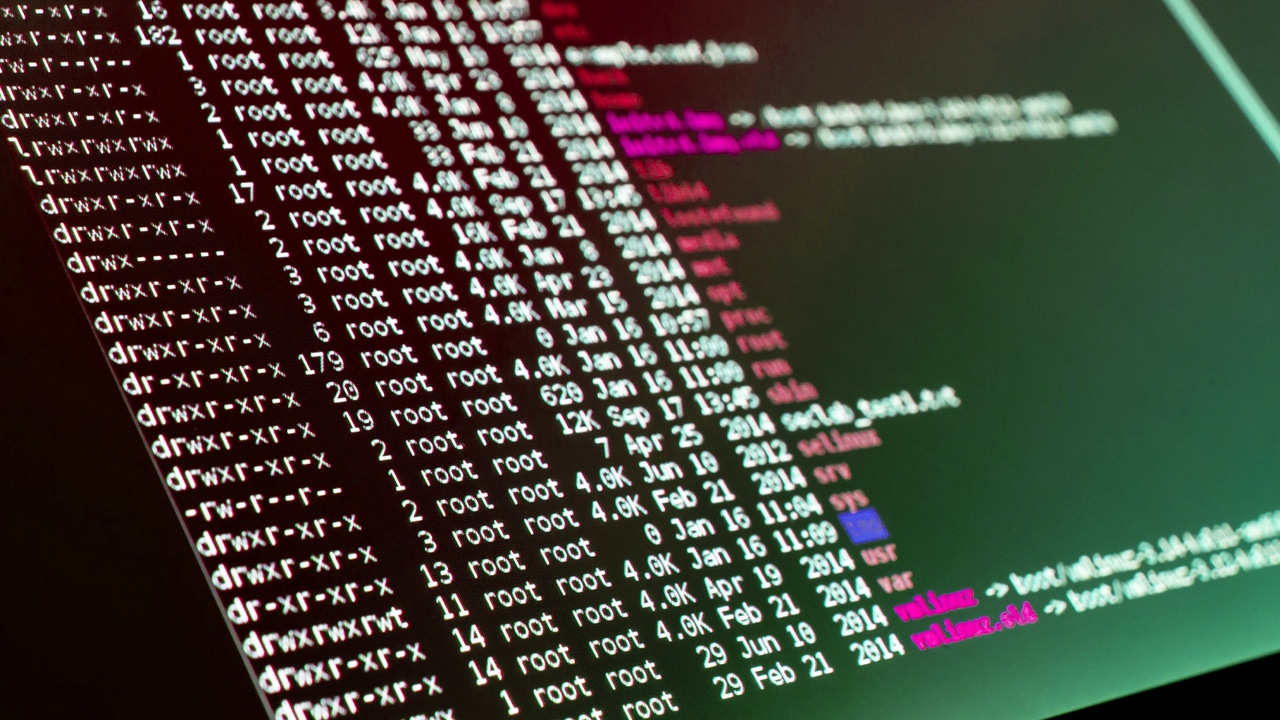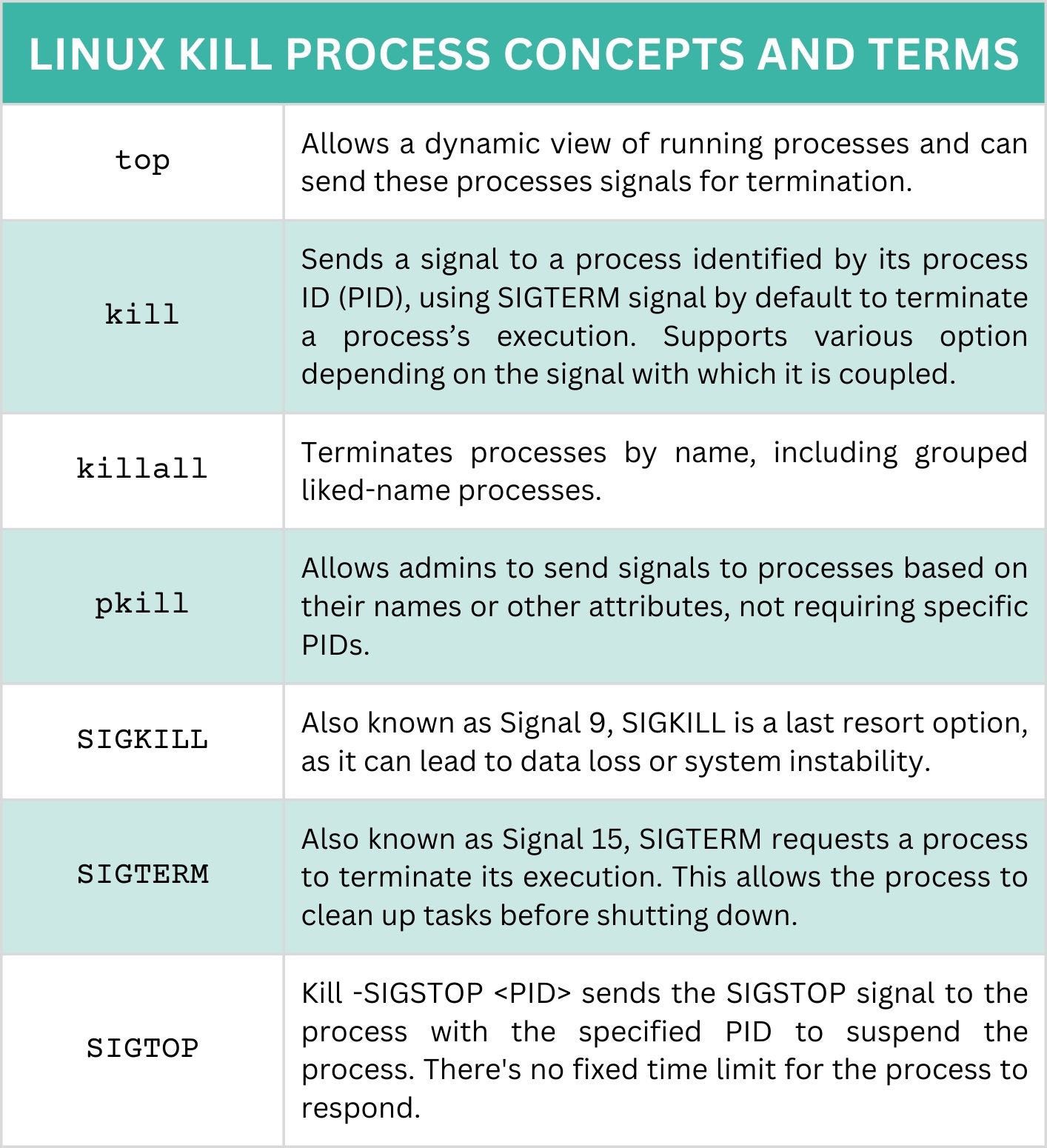Quick Guide: Kill Processes With Linux Command in SecondsQuick Guide: Kill Processes With Linux Command in Seconds
Kill Linux processes like a pro. Learn how to swiftly terminate programs with kill commands while preventing system errors.
July 9, 2024

Yes, it could have a violent ring to it. But no, “Kill Process” is not the name of a band that played CBGBs on Manhattan’s Bowery during the head-banging days of punk music. Instead, the kill process Linux command is a critical part of any admin’s bag of tools.
What Is the Kill Process Linux Command?
The kill process Linux command tells a running system to send a signal to terminate a process. This could be part of a normal shutdown, or it could be a hard, forced stop.
As an essential admin tool, the kill process Linux command has use in everyday management cleanup for system efficiency. It can also play a role in addressing the sudden need to forestall disruption of high-priority processes.
Kill Process Calls for Caution
Among the problems the kill process command can address are runaway processes. Although they vary in volatility and frequency, runaway processes, particularly, can create headaches for Linux system administrators. Runaway processes can consume prodigious amounts of CPU cycles, overrun memory, lead to measurable performance degradation and worse. The Linux kill process command can serve in some of these cases.
The kill command is designed to be executed from the command line interface of a Linux system. The shell – Linux distros support several, including Ash, Bourne, Debian Almquist, Bash and others – parses the command, locates the kill program, and executes it along with any options you may specify.
Upfront consideration is required in using a Linux kill process. The options you specify must be carefully considered, no matter how pressing the situation.
Graceful system degradation is nearly always the best course to take. A kill command accompanied with the SIGKILL signal can be a powerful tool, but it's important to use it responsibly. That is because SIGKILL can lead to data loss as it forcefully terminates a process without allowing the process to clean up properly.
Navigating the Linux Kill Command: Essentials of Process Termination
In Linux, a running program is represented as a process. Every program in Linux is assigned a unique identification number, which is known as the PID or Process ID. A Process ID is represented as a numerical value. The value assigned to a process can be five digits, or more. This is used to identify and manage individual processes in action.
Working with the kill command in Linux begins with picking the right process to terminate. For managing operations, the top command in Linux is especially useful. It serves the needs of system administrators to monitor system health, and it provides a real-time view on active processes. The views that top provides include process identifying numbers, CPU utilization, average workload consumption, and more.
Merely writing k or q from a top command view can kill the top processes in the view. But it is important to note that the way of ending processes with k or q is not universally supported. More importantly, it's generally safer to specify a kill command directly with the PID attached. There are a lot more options that can alter the way in which the Linux kill process works, in other words, to change the way in which the process is “killed.”
In effect, the kill command sends signals to processes, with the default TERM signal allowing a graceful degradation of processes. Relevant kill process signals include SIGINT, SIGKILL, SIGTERM and others. With unresponsive processes, such more forceful signals can be employed. But here, again, caution comes into play, as the more forceful methods may cause data loss.
The kill command sends signals to processes, with the default TERM – for terminate – signal often leading to a graceful shutdown. More forceful signals can be used for unresponsive processes, but caution is advised as they might cause data loss. Additionally, the killall command provides a way to terminate all processes with a specific name. Thus, system admins can cite processes to kill by name, not by number.
Stating kill commands together with explicit signal citations is part of the art of Linux system administration. A process that catches SIGTERM, for example, can perform cleanup before exiting.

Linux Kill Process Concepts and Terms
Unix/Linux Kill Process Background
With some slight variations in some areas – the obvious example is that graphical user interfaces offer an alternative to command line access – the process for killing processes in Linux is pretty much the same across the different distributions.
Commands like kill, ps, and top will work in the same way, independently of the distribution that is used. Naturally, the methods for killing processes in Unix, the progenitor of Linux, are also very similar to those outlined here.
The "kill" command in Unix and Linux has advanced over time. Unix as it arose from the work of computer scientists Ken Thompson and Dennis Ritchie at Bell Labs in 1969 sported an elementary “kill command” that sent only a SIGINT (interrupt signal) to a process.
As shown, the kill process Linux command evolved to allow a variety of signals to handle a variety of purposes. That all proved useful in the 1990s as Linus Torvalds and a band of merry people began to fashion Linux from Unix’s roots, and bring open-source software to the world on a then-unimagined scale.
For more on this topic, check out the Linux Foundation’s SysAdmin resources.
About the Author
You May Also Like









